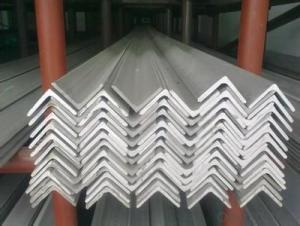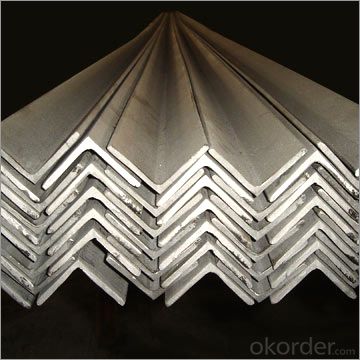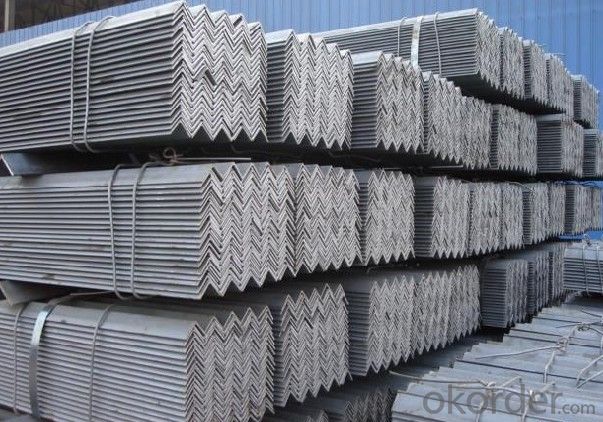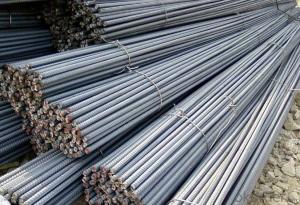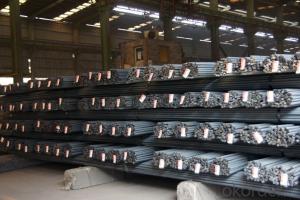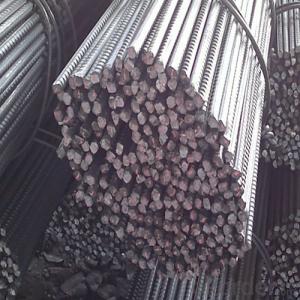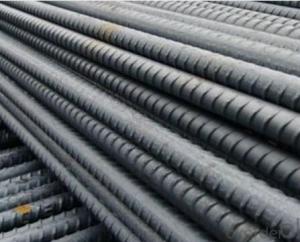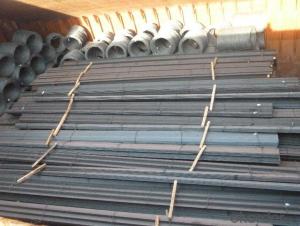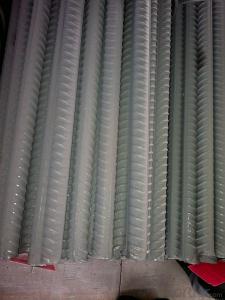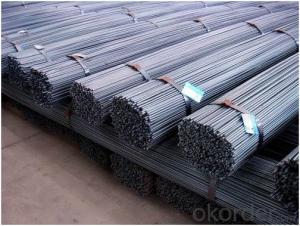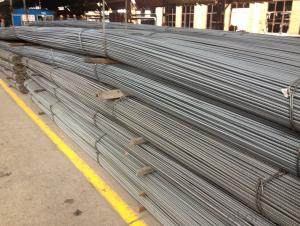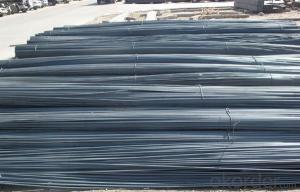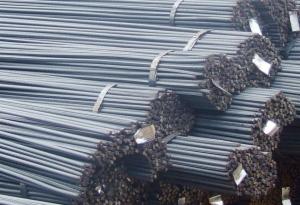Deformed Bar Hot Rolled High Quality BS 4449 GB HRB400
- Loading Port:
- Tianjin
- Payment Terms:
- TT OR LC
- Min Order Qty:
- 25 m.t.
- Supply Capability:
- 2000000 m.t./month
OKorder Service Pledge
OKorder Financial Service
You Might Also Like
Specification
Product Description:
OKorder is offering high quality Hot Rolled Steel I-Beams at great prices with worldwide shipping. Our supplier is a world-class manufacturer of steel, with our products utilized the world over. OKorder annually supplies products to European, North American and Asian markets. We provide quotations within 24 hours of receiving an inquiry and guarantee competitive prices.
Product Applications:
Deformed bar is widely used in buildings, bridges, roads and other engineering construction. Big to highways, railways, bridges, culverts, tunnels, public facilities such as flood control, dam, small to housing construction, beam, column, wall and the foundation of the plate, deformed bar is an integral structure material. With the development of world economy and the vigorous development of infrastructure construction, real estate, the demand for deformed bar will be larger and larger
Product Advantages:
OKorder's Steel I-Beams are durable, strong, and resist corrosion, exact size, regular package, chemical and mechanical properties are stable.
Main Product Features:
· Premium quality
· Prompt delivery & seaworthy packing (30 days after receiving deposit)
· Corrosion resistance
· Can be recycled and reused
· Mill test certification
· Professional Service
· Competitive pricing
Product Specifications:
Manufacture: Hot rolled
Grade: BS4449
Certificates: ISO, SGS, BV, CIQ
Diameter: 6mm,8mm,10mm,12mm,14mm,16mm,18mm,20mm,
22mm,25mm,28mm,32mm,36mm,40mm,50mm
Length: 6M, 9M,12M or as required
Packaging: Export packing, nude packing, bundled
Chemical Composition: (Please kindly find our chemistry of our material based on HRB500 as below for your information)
Grade | Technical data of the original chemical composition (%) | ||||||
C | Mn | Si | S | P | V | ||
HRB400 | ≤0.25 | ≤1.60 | ≤0.80 | ≤0.045 | ≤0.045 | 0.04-0.12 | |
Physical capability | |||||||
Yield Strength (N/cm²) | Tensile Strength (N/cm²) | Elongation (%) | |||||
≥400 | ≥570 | ≥14 | |||||
Theoretical weight and section area of each diameter as below for your information:
Diameter(mm) | Section area (mm²) | Mass(kg/m) | Weight of 12m bar(kg) |
6 | 28.27 | 0.222 | 2.664 |
8 | 50.27 | 0.395 | 4.74 |
10 | 78.54 | 0.617 | 7.404 |
12 | 113.1 | 0.888 | 10.656 |
14 | 153.9 | 1.21 | 14.52 |
16 | 201.1 | 1.58 | 18.96 |
18 | 254.5 | 2.00 | 24 |
20 | 314.2 | 2.47 | 29.64 |
22 | 380.1 | 2.98 | 35.76 |
25 | 490.9 | 3.85 | 46.2 |
28 | 615.8 | 4.83 | 57.96 |
32 | 804.2 | 6.31 | 75.72 |
36 | 1018 | 7.99 | 98.88 |
40 | 1257 | 9.87 | 118.44 |
50 | 1964 | 15.42 | 185.04 |
FAQ:
Q1: What makes stainless steel stainless?
A1: Stainless steel must contain at least 10.5 % chromium. It is this element that reacts with the oxygen in the air to form a complex chrome-oxide surface layer that is invisible but strong enough to prevent further oxygen from "staining" (rusting) the surface. Higher levels of chromium and the addition of other alloying elements such as nickel and molybdenum enhance this surface layer and improve the corrosion resistance of the stainless material.
Q2: Can stainless steel rust?
A2: Stainless does not "rust" as you think of regular steel rusting with a red oxide on the surface that flakes off. If you see red rust it is probably due to some iron particles that have contaminated the surface of the stainless steel and it is these iron particles that are rusting. Look at the source of the rusting and see if you can remove it from the surface.
Q3: Can stainless steel rust?
A3: Stainless does not "rust" as you think of regular steel rusting with a red oxide on the surface that flakes off. If you see red rust it is probably due to some iron particles that have contaminated the surface of the stainless steel and it is these iron particles that are rusting. Look at the source of the rusting and see if you can remove it from the surface.
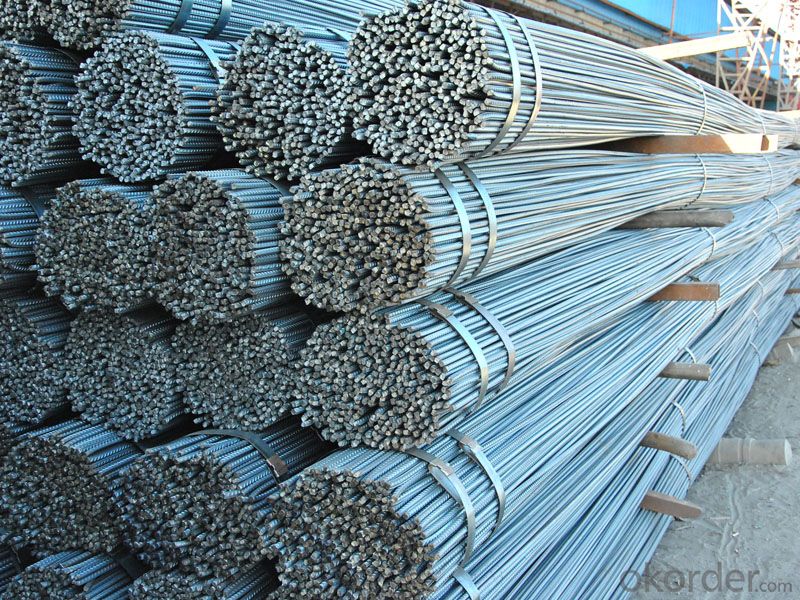


- Q: Can steel rebars be used in tunnels and underground structures?
- Yes, steel rebars can be used in tunnels and underground structures. Rebars are commonly used in construction projects to reinforce concrete structures and provide additional strength and durability. In tunnels and underground structures, where stability and load-bearing capacity are crucial, steel rebars are often incorporated into the concrete walls, floors, and ceilings to enhance their structural integrity. The rebars help to distribute the load and resist potential cracks or deformations caused by the pressure from the surrounding soil or water. Moreover, steel rebars offer resistance against corrosion, making them suitable for underground environments where moisture and other corrosive elements may be present. Overall, steel rebars are an essential component in the construction of tunnels and underground structures, ensuring their safety and longevity.
- Q: Can steel rebars be used in the construction of data centers and server rooms?
- Yes, steel rebars can be used in the construction of data centers and server rooms. Steel rebars provide structural reinforcement and can be used in the construction of walls, columns, and foundations. They help to enhance the overall strength and durability of the building, ensuring the safety and stability of the data center or server room infrastructure.
- Q: Can steel rebars be used in structures with high aesthetic requirements?
- Indeed, structures with high aesthetic standards can make use of steel rebars. Although steel rebars are mainly employed for their robustness and longevity, they can also be fashioned and integrated in a manner that satisfies aesthetic necessities. Rebars have the potential to be molded, curved, or even coated to align with the desired visual appeal of the structure. Furthermore, they can be concealed within the framework or concealed under alternate materials to preserve a pristine and visually captivating facade. Through meticulous forethought and design, steel rebars can be effectively employed in structures with demanding aesthetic prerequisites without compromising their functionality or visual allure.
- Q: What are the factors to consider when choosing the right steel rebar for a project?
- Several factors must be considered when choosing the appropriate steel rebar for a project. These factors encompass the project type, structural requirements, environment, and specific rebar characteristics. The project type is a key factor to consider, as each type has unique structural demands. Residential buildings, bridges, and highways, for example, require different strengths and capacities. The chosen steel rebar must be able to withstand the expected loads and stresses of the project. Additionally, its size and shape should match the project's design and specifications. Structural requirements are crucial in selecting the right steel rebar. This involves evaluating the required tensile strength, yield strength, and elongation properties. It is essential to choose a rebar that provides the necessary strength and durability to maintain the project's structural integrity. The project's environment also plays a significant role. If the project will be exposed to corrosive elements like saltwater or chemicals, corrosion-resistant rebar is necessary. This choice prevents premature deterioration and ensures the structure's longevity. Furthermore, specific rebar characteristics must be assessed. The grade of the steel, which determines its strength and ductility, is important. Different grades, such as ASTM A615 or ASTM A706, possess distinct properties suitable for various applications. The rebar's surface finish, whether plain or deformed, also affects its bonding ability with concrete. Availability and cost are additional factors to consider. It is vital to ensure that the selected rebar is readily available in the required quantities and sizes. Moreover, the rebar's cost should align with the project's budget constraints. In conclusion, choosing the appropriate steel rebar for a project entails considering the project type, structural requirements, environmental conditions, and specific rebar characteristics. By carefully evaluating these factors, one can select the most suitable steel rebar that guarantees the structure's durability and longevity.
- Q: What is the maximum length of steel rebars that can be manufactured?
- The maximum length of steel rebars that can be manufactured depends on various factors such as the manufacturing process, transportation limitations, and practical considerations. However, in general, steel rebars can be manufactured up to lengths of around 60 feet or 18 meters.
- Q: What is the impact of steel rebars on the overall sustainability of a building?
- Steel rebars have a significant impact on the overall sustainability of a building. The use of steel rebars in construction enhances the structural integrity and longevity of a building, reducing the need for frequent repairs and replacements. This, in turn, contributes to the sustainable aspect of a building by minimizing resource consumption and waste generation. Moreover, steel is a highly recyclable material, allowing for a circular economy approach in construction. By incorporating steel rebars, buildings can achieve higher energy efficiency, reduced environmental footprint, and enhanced durability, thus positively impacting their overall sustainability.
- Q: How do steel rebars impact the overall constructability and scheduling of concrete projects?
- Steel rebars play a crucial role in the overall constructability and scheduling of concrete projects. These reinforcing bars are essential for providing strength and stability to concrete structures, ensuring their durability and resilience. Firstly, steel rebars enhance the constructability of concrete projects by providing reinforcement and support to the concrete. By adding rebars within the concrete, the overall structural integrity of the project is significantly improved. This reinforcement allows for the construction of taller and more complex structures, as the rebars help distribute the load and resist tension and compression forces. Moreover, steel rebars facilitate the scheduling of concrete projects. When properly planned and incorporated, rebars can expedite construction timelines. By incorporating rebars into the concrete formwork, construction teams can efficiently pour and shape the concrete, reducing the time required for curing and achieving the desired strength. This has a direct impact on project scheduling, allowing for faster construction progress and potential cost savings. Additionally, the use of steel rebars in concrete projects enables flexibility in design and construction. The ability to customize the placement, size, and spacing of rebars ensures that the concrete structure meets the specific design requirements and intended functionality. This flexibility is particularly important in projects that require intricate architectural features or specific load-bearing capacities. However, it is essential to note that the proper installation and coordination of steel rebars can pose challenges in terms of scheduling. Rebar installation must be carefully coordinated with other construction activities to avoid delays. Furthermore, quality control measures are crucial to ensure the correct placement and alignment of rebars, as any errors or deficiencies can impact the overall quality and safety of the project. In conclusion, steel rebars have a significant impact on the constructability and scheduling of concrete projects. They enhance the overall strength and stability of concrete structures, allowing for the construction of more intricate and robust designs. Additionally, the proper incorporation of rebars can expedite construction timelines and provide flexibility in project scheduling. However, careful planning, coordination, and quality control are necessary to ensure the successful integration of rebars in concrete projects.
- Q: Can steel rebars be used in precast concrete walls?
- Yes, steel rebars can be used in precast concrete walls. The presence of rebars helps to reinforce the concrete and increase its strength and durability. Rebars are commonly used in precast concrete walls to provide structural integrity and resist the forces acting on the wall.
- Q: Can steel rebars be replaced with other reinforcement materials?
- Yes, steel rebars can be replaced with other reinforcement materials such as fiberglass, carbon fiber, or composite bars. These alternative materials offer advantages like higher tensile strength, corrosion resistance, and lighter weight. However, the choice of replacement material depends on the specific requirements of the construction project and should be evaluated carefully to ensure structural integrity and compliance with relevant codes and standards.
- Q: Can steel rebars be used in foundation systems?
- Yes, steel rebars can be used in foundation systems. Steel rebars are commonly used as reinforcement in concrete foundations to provide additional strength and stability. They help to distribute the load evenly and prevent cracking or failure of the foundation.
Send your message to us
Deformed Bar Hot Rolled High Quality BS 4449 GB HRB400
- Loading Port:
- Tianjin
- Payment Terms:
- TT OR LC
- Min Order Qty:
- 25 m.t.
- Supply Capability:
- 2000000 m.t./month
OKorder Service Pledge
OKorder Financial Service
Similar products
Hot products
Hot Searches
Related keywords
